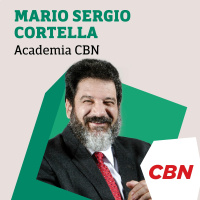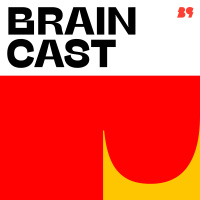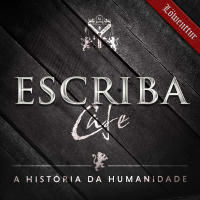Sinopsis
This show targets an audience interested in archaeology. It explores myths surrounding this exotic, often misunderstood field and acquaints listeners with the contemporary practice of unearthing the human past. Themes range from Dr. Schuldenrein’s own “Indiana Jones”-like adventures in the land of the Bible to his team’s archaeological forensics effort to unearth Kurdish mass graves in Iraq. That undertaking helped convict Saddam Hussein in 2006. Topical issues contribute to the evolution vs. creationism controversy based on updated fossil records and innovative DNA studies. An episode highlights the main funding source for archaeology in the U.S. (Hint: the oil and gas industry). Experts reveal the latest high-tech approaches to buried archaeological landscapes that provide clues to understanding climate change, past, present and future. Indiana Jones: Myth, Reality and 21st Century Archaeology is broadcast live every Wednesday at 3 PM Pacific Time on the VoiceAmerica Variety Channel
Episodios
-
The Mission of Major Archaeological Organizations: World Archaeological Congress (WAC)
06/03/2013 Duración: 43minArchaeological organizations not only provide a sense of community and broad exchange forums for professional archaeologists, but they also play major role in promoting the message of archaeology to the lay community. The World Archaeological Congress (WAC) is perhaps the most inclusive and extensive organization of its kind in the world. A critical component that surfaces in the WAC’s various venues is the range of geo-political themes that emerge as professionals from a variety of archaeological backgrounds exchange their ideas on the profession’s aspirations and missions. This week we bring in Drs. Claire Smith and Anne Pyburn, president and vice-president elect of WAC respectively. They will explore the potential of the organization to promote international co-operation at a time when the goals and aims of traditional archaeology have been questioned and the need for more co-operation is becoming paramount to secure the field’s survival well into the future.
-
Recent Developments in the North Atlantic Archaeology
27/02/2013 Duración: 57minThe archaeology of northern, cold climate environments is often considered a world onto itself. Recently, the regions of the North Atlantic have emerged as critical barometers in assessing patterns of human adaptation to climatic and landscape change. This is because of the unique utility of such environments to preserve records of ecological transition. The Greenland ice cores have arguably furnished the most complete archive of climate change in the world. Human settlements in these stark landscapes are diagnostic indicators of whether humans could survive climatic stress or not. The question of the initial Euroamerican settlement of the New World, by the Vikings or Columbus, continues to fascinate professionals and laypeople alike. In this episode we interview Dr. Thomas McGovern, one of the leading experts in the field of North Atlantic eco-systems and settlement geography to get a contemporary view on the state of the field.
-
Special Encore Presentation: Beneath These Mean Streets: The Practice of Archaeology in New York City
20/02/2013 Duración: 56minNew York City is considered the cultural and commercial capital of North America. Was it always this way? How did the city evolve into such an active hub where diverse peoples and cultures mixed and mingled to produce this dynamic metropolis? This episode explores the practice of “urban archaeology”, documenting the city’s emergence from prehistoric times (15,000 years ago) through the period of Euroamerican contact (commonly A.D.1492), and on to the present. We discuss the history of local archaeological practice and the novel applications of archival research and scientific techniques to “dig” in the complex maze of subsurface utilities and structures beneath city streets. We learn how historic preservation law accommodates protection of cultural resources from development interests. Some of the more recent finds and projects are discussed with professionals from private and university archaeologicalsectors, as well as the regulatory agencies that oversee this work.
-
The Growth, and Influence of the Oil and Gas Industry on Contemporary Archaeology
13/02/2013 Duración: 54minThe progressive decline in funding has reached epidemic proportions in North American archaeology. However, this decline is almost inversely proportional to the expanded role of applied archaeology and the concomitant acceleration of private sector influence. One of the most striking trends in this regard is the recognition that “scientific archaeology” goes hand in hand with cost-efficient management of cultural resources. The largest budgets and advanced research technologies in today’s archaeology are furnished by pipeline construction. Collaborative efforts between oil and gas engineers and Cultural Resource Management (CRM) professionals has resulted in quantum leaps in the discovery and understanding of the archaeological record. In today’s episode prominent consulting archaeologist Dr. Chris Bergman, a veteran private-sector consultant, evaluates the pivotal roles that pipeline distribution roles are playing to enhance our understanding of North American history and prehistory.
-
Special Encore Presentation:The Nexus of Archaeology and Politics in Historic and Contemporary Contexts
06/02/2013 Duración: 57minPast episodes have demonstrated that archaeology overlaps with broader questions of contemporary life. Our recent programs considered the obvious links between archaeology and religion as well as ethics. The question of evolution vs. creationism is an obvious arena in which the human fossil record can be drawn upon to question traditional Judaeo-Christian concepts of our origins. Religion is also not taboo, as archaeological remains of the Biblical period document a material culture consistent with Old and New Testament descriptions but cast doubt on the veracity of specific events and the identities of charismatic figures. Archaeology has also been swept up in political conflicts in a variety of places, scenarios, and venues. Findings have been used in situations ranging from local development conflicts (as a wedge pitting economic vs. preservation interests) to more global venues leading, in extreme cases, to outbreaks of wars and the destruction of cultures and populations.
-
The Changing Face of Contemporary Egyptology: Old Perspectives and New Directions
30/01/2013 Duración: 59minEgyptian civilization for centuries has been a source of inspiration and curiosity for academic scholars, treasure hunters, grave looters, and the general public. Our image of Egyptologists is that their investigative techniques are traditional and focus on refining Dynastic sequences, architectural elements, and hieroglyphics. However, the field has been transformed over the years and is addressing more anthropological questions, ranging from settlement geography to social organization, using technologies such as GIS, geoarchaeology and remote sensing. Of critical import at present, is the transformative direction Egyptological research will take in the wake of the Arab Spring and the re-organization of the Department of Antiquities and Heritage Management infrastructures. Today’s guest, Dr. Donald Redford, has witnessed the evolution of Egyptological research over the course of half a century and will share his insights on the changing landscape of Egyptian studies over the years.
-
Maritime Archaeology in the South Pacific and Southeast Asia
23/01/2013 Duración: 51minThe science of Maritime Archaeology has been widely practiced in the South Pacific and neighboring regions. Today's episode examines how a sophisticated international infrastructure has developed around this fascinating sub-discipline of archaeology. Does underwater archaeology inform on ancient tsunamis and catastrophic events, which appear more common in this part of the world than elsewhere? We discuss the history and development of maritime archaeology in this unique part of the world with one of its best know practitioners. Dr. Mark Staniforth has pioneered some of the major techniques in underwater archaeology and has worked extensively off the coast of his native Australia as well as in some of the more fascinating off shore environments in Southeast Asia, most recently in Vietnam
-
“And They Also Made Boats…” Maritime Archaeology in Pharaonic Egypt”
16/01/2013 Duración: 54minWhile the contributions of the ancient Egyptians to Western Civilization are familiar to the general public, this brilliant culture's seafaring technology is little known. Recent investigations have revealed that a sophisticated and efficient shipbuilding industry thrived in Pharaonic Egypt. River and seafaring vessels were locally and regionally built that facilitated commerce and transportation along the Nile and beyond. This episode examines how terrestrial and maritime archaeology enables researchers to reconstruct the ancient technology of Egyptian shipbuilding. Maritime archaeologist Cheryl Ward (Coastal Carolina University) and Egyptologist Kathryn Bard (Boston University) together with a team of experts have successfully reproduced and sea-tested an ancient Egyptian vessel on the Red Sea. They discuss the implications of their findings, which expand the reach of Egyptian civilization in the Mediterranean Basin and elsewhere.
-
The Nuts and Bolts of Compliance Archaeology
09/01/2013 Duración: 56minThere are unofficial estimates that on the order of 90% of the archaeology undertaken in the United States are attributable to applications of preservation law. Specifically Section 106 of the National Historic Preservation Act (1966) requires that federal agencies take into account the effects of their undertakings on properties listed or eligible for listing on the National Register of Historic Places. Similar legal guidelines are in force in many other parts of the world. In this broadcast, we provide an overview of how the complex matrix of legislation and archaeological compliance is manifested in the United States. We discuss the roles of key federal agencies responsible for such preservation programs. We also examine1 some key projects and the nature of heritage management in other countries. Finally, we look at the sources and the interests that account for most of the development related archaeological funding across the U.S. The answers to these questions will surprise you!
-
Computers and Archaeology: A Technological Revolution
02/01/2013 Duración: 57minDr. Schuldenrein is joined by special guest Dr. Harrison Eiteljorg, classical archaeologist and the founder and Director of the Center for the Study of Architecture, to discuss computers and archaeology. Dr. Eiteljorg, who helped pave the way for the use of computers in classical archaeology, was at the forefront of the technological revolution that brought computers into widespread use in archaeological research and methods over the past 40 years. Dr. Eiteljorg gives us his personal and professional account of the birth of computerized archaeological excavation and its impact on excavation and post-excavation procedures. Dynamic and interactive, Drs. Schuldenrein and Eiteljorg discuss the past, present and future of computers and technology in archaeology.
-
Special Encore Presentation: Jesus, Archaeology, and the Origins of Christianity: Recent Findings and Theories
26/12/2012 Duración: 56minThis week the host explores a true Indiana Jones theme, which fascinated not only scholars, but also the general public for centuries - the quest for discovery of the Tomb of Jesus. Since 1980s discoveries of a series of ossuaries buried beneath a condominium complex in Jerusalem have provoked controversy about the relationship between suspected remains of Jesus and their presumed placement by his early Christian followers. Ongoing explorations by filmmakers and scholars have revised interpretations and offer new perspectives on the Jesus story based on a variety of sources. Our guest this week is Dr. James Tabor, professor and chair of religious studies at the University of North Carolina-Charlotte, who have been recently working on these tombs with the filmmaker Simcha Jacobovici using very specialized, custom-built high-tech cameras, which allowed to examine the tombs, ossuaries and everything associated with them without going into the tomb.
-
The Armageddon that Wasn't: Exploring Popular Misconceptions About the Mayans and their Calendar
19/12/2012 Duración: 55minDr. Schuldenrein responds to representations of the Mayans and their calendar that have emerged in recent months in anticipation of the supposed end of days on December 12, 2012. In particular, our host explores how concepts deriving from the world of archaeology and grounded in scientific fact are misinterpreted, misunderstood and misapplied by the media and consumed by popular culture. Instead, learn what archaeologists really know about the Mayans and their culture, including their sophisticated understanding of astronomy and their complex notions of life cycles and time. Stay tuned to find out what the supposed armageddon date of 12/12/12 actually signifies on the Mayan Calendar and how popular culture got it so wrong.
-
Beyond Aesthetics: Classical Archaeology and the Art of Ancient Greece and Rome
05/12/2012 Duración: 53minClassical archaeology is often integrated with art history in university and college departments across the world. Dr. Rachel Kousser, professor of Greek and Roman Art and Archaeology at the CUNY Graduate Center and Brooklyn College, explains to Dr. Schuldenrein and listeners how and why archaeology and art go hand in hand when studying the classical world of Greece and Rome. Instead of solely focusing on the creation and aesthetic of a piece of art, archaeology allows the materiality and biography of an object to be considered in its interpretation. In other words, the anthropological concept of context allows researchers to contemplate where the object was used, who was using it, and what it meant to the people consuming it. Classical Art can now be seen, much like today, to serve political purposes, reveal gender identities, and provide social commentaries. Enriching and revealing, the integration of archaeology and art history opens up ancient Greece and Rome like never before.
-
The Message of Archaeology and Informing the Public of Our Worth
28/11/2012 Duración: 56minArchaeology is often perceived as an obscure discipline, understood and practiced by the few. Despite the inherent appeal of the field, archaeologists remain notoriously poor communicators to the broader public. Brian Fagan remains a unique exception to the rule. He has uniquely succeeded in parlaying and synthesizing the message of archaeology across a range of public venues. Dr. Fagan assesses the problems modern-day archaeology confront in the rapidly developing world of new technologies and business, and why it is important to make archaeology a “user-friendly” discipline with an emphasis on public outreach. Our guest combines meticulous research on various archaeological themes with the enjoyable and fascinating language of literary fiction.
-
The Search for Paleoindians Underneath the Sea: Underwater Archaeology and New World Colonization
14/11/2012 Duración: 55minEven the strongest climate change skeptics are aware of the cyclical nature of sea level rise. Encroachment of the sea is related to the melting of the ice sheets and the associated elevation of global water lines along our coasts. However, the earliest Americans populated the New World at the end of the Ice Age, at least 15,000 years ago. At that time sea level was depressed by about 30 meters since the ocean waters were locked up as frozen ice sheets. In recent years the search for evidence of the late glacial hunters and Stone Age man in the Americas has concentrated on explorations along the submerged continental shelf of the Atlantic and Pacific coasts. These searches have been quite fruitful and have expanded our knowledge on the ancient geography of the coastlines. Today's guest, Dr. Michael Faught of Panamerican Consultants, is an expert on submerged archaeological sites. He shares his unique insights on underwater archaeology and the quest for the earliest New World settlers.
-
The Good Witches of Cornwall, UK: The Saveock Water Archaeology Project
31/10/2012 Duración: 56minA Mesolithic site in Cornwall provided evidence of human habitation along a marshy streambed in Cornwall. Its spring-fed waters preserved a sustained record of human occupation through the Neolithic, Bronze and Iron Ages. However, the site is best known for a series of animal pits whose contents vary but are characterized by similar shapes and contents for the interval A.D. 1640-1970. The earliest pits were lined with swan feathers and small stones. The latter were imported from a source 15 miles away. Through time, the remains changed and included cats, pigs, and dog teeth, with eggs and the typical small stones as well. The most recent of these pits contained plastic artifacts dated to the 1970's, suggesting that these practices are still in force in Cornwall. Our special guest is Dr. Jacqui Wood who runs an archaeological field school in Cornwall dedicated to uncovering the secrets of the pits and tracking their contemporary analogues.
-
On the Eve of Destruction: The Magnificent Archaeological Complex at Mes Aynak (Afghanistan)
10/10/2012 Duración: 57minThe complex of Mes Aynak represents one of the most spectacular archaeological treasures in the world. Situated in Logar Province, Afghanistan, Mes Aynak is South Asia's earliest mining complexes and distribution centers. This 2,600 year old city was also the center of Buddhist monasteries that flourished at around the time of Christ. Today the entire site is in danger of destruction because of pressure to develop this ancient mining site into the most profitable copper mine in a country. Archaeologists have been working on the site for several years, but their efforts have been uneven, often disjunct, and discontinuous. Today's guests, Brent Huffman, a documentary film maker who has visited the site on numerous occasions, and well-known South Asia archaeologist, Dr. Rita Wright, provide new insights into the potential cultural tragedy that may seal the site's fate unless large scale appeals to save the site are championed by concerned diplomats, politicians, and the public at large.
-
An Introduction to the World of Geoarchaeology: The Intersection of Earth Science and Cultural Heritage
26/09/2012 Duración: 56minOver the past half century the domain of archaeology has increasingly migrated into the natural sciences. Geology, in particular, is a likely avenue for examining the nature of archaeological remains, since the earth and soil preserve cultural remains. It follows that an understanding of the composition and transformation of the geological layers that contain archaeology goes a long way in explaining why people lived in certain places and how the evidence of their activities is preserved. Geoarchaeologists can tell us about the processes and environments that account for an archaeological site. The reach of geoarchaeology extends into environmental reconstruction, dating of key events associated with human and natural events, and the climates in which various cultures thrived. Today's special guests, Dr. Vance Holliday and Dr. Sarah Sherwood, discuss the unique perspectives that geoarchaeologists bring to a more comprehensive understanding of contemporary archaeology.
-
The Role of Major Archaeological Organizations: Archaeological Institute of America
19/09/2012 Duración: 54minArchaeological organizations function in a variety of different ways to promote the message of archaeology to the greater public and to serve the common interests of professional archaeologists. We are launching a series of programs to acquaint the listenership with the role and function of these organizations. Our initial program examines the emergence and significance of the Archaeological Institute of America (AIA), one of the oldest and most venerated archaeological fraternities in the country. We present an interview with Dr. Paula Lazrus, President of the New York Chapter of the AIA, the largest local society of the parent organization in the country.
-
Who Were the Ancient Maya?
12/09/2012 Duración: 56minScholars and the general public alike are fascinated by the ancient Maya, a people whose culture and domain extended from southern and eastern Mexico into Guatemala, Belize, Honduras, and El Salvador. We are collectively captivated by theories of the predicted demise of civilization and the ostensible secrets of the Mayan calendar. But truth can sometimes be more intriguing than fiction. Much of what we know about the Maya has been culled by our understanding of their unique wetlands landscape and the adaptations they made to that tropical and forested environment. Mayan engineering technologies account for their ability to survive in settings that were challenging, to say the least. Our discussion is led by Drs. Timothy Beach and Sheryl Luzzadder-Beach, who discuss their recent work in the Mayan heartland and report on new archaeological technologies that shed light on the survival and eventual disappearance of this ancient civilization.














